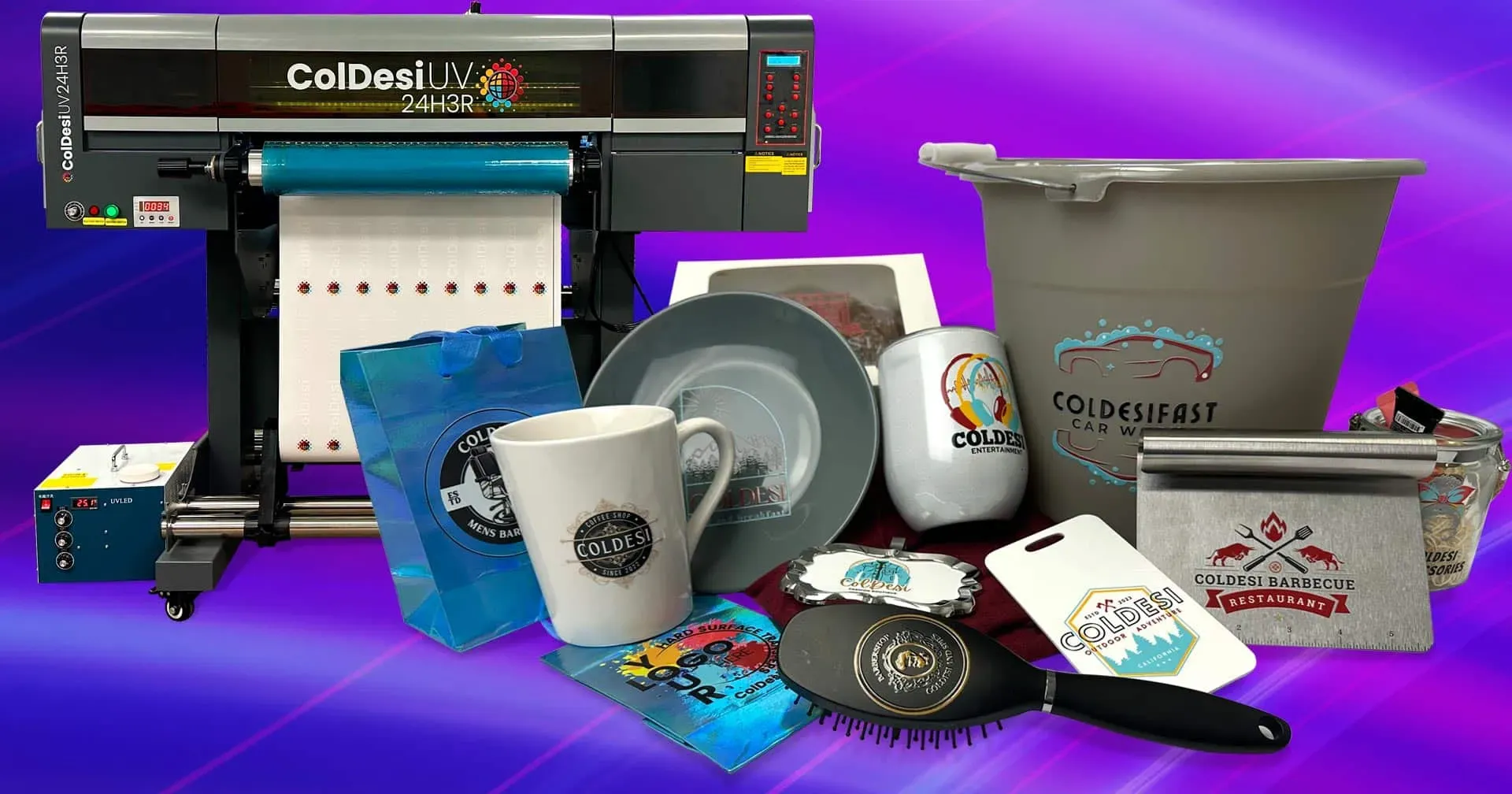UV DTF Printing, or UV Direct-to-Film printing, is rapidly gaining traction as a game-changing technology in the printing sector, particularly due to its commitment to environmental sustainability. By harnessing ultraviolet light to instantly cure inks, this method significantly curbs harmful chemical emissions that are prevalent in traditional printing practices. Not only does UV DTF Printing utilize eco-friendly inks that minimize environmental impact, but it also promotes energy efficiency in printing processes, ultimately benefiting both businesses and the planet. Additionally, the reduction of waste in printing is remarkably lower compared to conventional methods, aligning perfectly with global sustainability goals. This introduction to UV DTF Printing highlights its role as a pioneering solution for those seeking to combine high-quality prints with eco-consciousness.
The practice of Direct-to-Film printing utilizing ultraviolet light, commonly known as UV DTF printing, offers a fresh perspective on sustainable printing solutions. This printing technique stands out for its innovative approach to minimizing the environmental footprint associated with traditional printing methods. By incorporating energy-efficient technologies and eco-friendly inks, this printing process not only enhances print quality but also significantly reduces waste generation. The transition toward using sustainable materials in production reinforces the growing importance of responsible manufacturing practices. As industries increasingly adopt this advanced printing technology, the benefits become evident, demonstrating a strong commitment to eco-friendly production methodologies.
Understanding UV DTF Printing and Its Environmental Impact
UV Direct-to-Film (DTF) printing is a game-changer in the printing industry, harnessing advanced technology to offer a cleaner alternative to older methods. By using ultraviolet light to instantly cure printed inks, this method drastically cuts down on harmful volatile organic compounds (VOCs) typically emitted by traditional solvent-based inks. The immediate curing process not only enhances production efficiency but also promotes healthier work environments and minimizes environmental pollution.
The environmental impact of UV DTF printing goes beyond just VOC reduction. By eliminating the need for toxic chemicals, manufacturers can achieve a more sustainable printing process. This innovation aligns with global initiatives aimed at fostering eco-friendly practices across industries, making UV DTF a sought-after solution for organizations committed to responsible production.
Frequently Asked Questions
What are the environmental benefits of UV DTF printing?
UV DTF printing offers significant environmental benefits, such as reduced chemical usage, enhanced energy efficiency, and minimized waste generation. By using UV-sensitive inks that cure without solvents, this method promotes cleaner air quality and safer working conditions. Additionally, its energy-efficient curing process lowers carbon emissions while producing less waste, supporting sustainable printing practices.
How does UV DTF printing contribute to sustainable printing?
UV DTF printing supports sustainable printing by utilizing eco-friendly inks and producing less waste. The technology’s ability to apply inks precisely reduces excess materials. Furthermore, many UV inks are made from renewable sources, promoting a circular economy and reducing reliance on petroleum-based products, which is vital for sustainable practices in the printing industry.
Is UV DTF printing energy efficient compared to traditional methods?
Yes, UV DTF printing is significantly more energy efficient than traditional printing methods. The UV curing process is faster and requires less energy, which leads to lower operational costs and a reduced carbon footprint. This energy efficiency makes UV DTF printing a more sustainable option for manufacturers.
Does UV DTF printing reduce waste in the printing process?
Absolutely. UV DTF printing minimizes waste generation by allowing for precise ink application directly to substrates. This approach significantly reduces excess materials and eliminates intermediate steps typically found in traditional printing methods, aligning with sustainable production practices and conserving valuable resources.
Are the inks used in UV DTF printing eco-friendly?
Yes, UV DTF printing utilizes eco-friendly inks that cure through UV light, reducing the need for harmful solvents. Many of these inks now incorporate biodegradable and renewable ingredients, making them safer for the environment and supporting sustainability in the printing industry.
What makes UV DTF printed products durable and long-lasting?
UV DTF printed products are known for their durability due to the UV curing process, which creates prints that are resistant to fading, scratching, and other forms of degradation. This longevity decreases the need for frequent replacements, which not only enhances product quality but also promotes sustainable consumption patterns by reducing resource use over time.
| Key Points | Details |
|---|---|
| Reduction in Chemical Usage | UV DTF printing significantly reduces the use of harmful VOCs by using UV-sensitive inks instead of solvent-based inks. |
| Energy Efficiency | The curing process with UV light is quicker and requires less energy, leading to lower operational costs and carbon emissions. |
| Less Waste Generation | The technology minimizes material waste by allowing precise ink application directly to substrates, reducing excess. |
| Sustainable Materials | UV DTF printing uses biodegradable and bio-based ingredients, supporting a circular economy. |
| Improved Durability | UV-cured prints are resistant to fading and scratching, leading to a longer lifespan and less frequent replacements. |
Summary
UV DTF Printing is an innovative and environmentally friendly method that significantly enhances sustainability in the printing industry. By minimizing chemical usage, improving energy efficiency, reducing waste generation, and promoting the use of sustainable materials, UV DTF printing not only produces superior quality prints but also supports long-term ecological goals. Additionally, the durability of UV-cured prints helps to further decrease resource consumption by extending product lifespans. As industries increasingly shift towards ecologically responsible practices, UV DTF printing emerges as a frontrunner in fostering a sustainable future, making it a wise choice for businesses and consumers alike.

